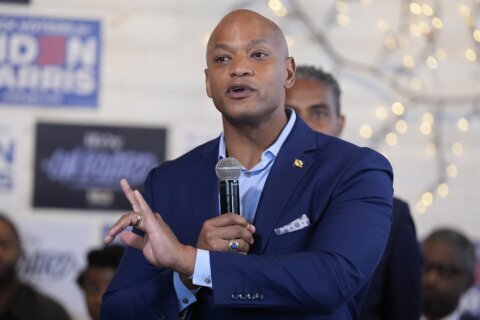A new report examining the University of Maryland’s historical ties to slavery has connected multiple enslavers to the school’s founding.
The first research report from the “1856 Project” shows the school’s link to slavery started with the state’s founder.
Charles Benedict Calvert was a member of the state of Maryland’s founding family that established the colony in 1632. Calvert was a slave owner and held 52 slaves in 1860, many who worked on his Riverdale plantation, a large portion of which is now the home of the university.
Two of the university’s original board trustees, William Goldsborough and Alexander Keech, were also slaveholders.
Goldsborough enslaved 55 people and was the son-in-law to former Maryland Gov. and Sen. Edward Lloyd. Frederick Douglass wrote about his life growing up as a slave on Lloyd’s plantation in his 1845 autobiography, “The Narrative of the Life of Frederick Douglass.”
Educator Alexander Keech enslaved 20 people. Keech’s property located northeast of the university is now the historically Black community of Lakeland.
One of the school’s honorary members of the Board of Trustees and possibly one of its largest investors, enslaved 140 people and owned four plantations in Louisiana, according to the report. William N. Mercer invested $5,000 in what was then known as The Maryland Agricultural College. In 2024, that investment would equal $150,000.
Another part of the report shows part of the road to freedom once went through the land that is now the campus of the University of Maryland.
The Underground Railroad went through university property in the 1840s and 1850s, thanks to the start of The B&O Railroad. The reduced traffic on the Old Turnpike between Baltimore and D.C. due to The B&O Railroad created an opportunity for freedom seekers.
Some of those seeking freedom would stop at the Rossborough Inn, the oldest building on campus. Enslaved staff members of the 221-year-old tavern would provide directions and provisions for those traveling on the Underground Railroad.
The group of librarians, archivists and students that worked on this first report for The 1856 Project discovered names of hundreds of enslaved individuals linked to the university.
The report noted “this massive complex system of bondage where individuals were sold, farmed out, and transferred from one family to another due to marriage and the intermingling of ‘assets.'”
The 1856 Project, also known as Universities Studying Slavery at the University of Maryland, aims to draw attention to the ways the history of slavery is linked to the university.
Get breaking news and daily headlines delivered to your email inbox by signing up here.
© 2024 WTOP. All Rights Reserved. This website is not intended for users located within the European Economic Area.








